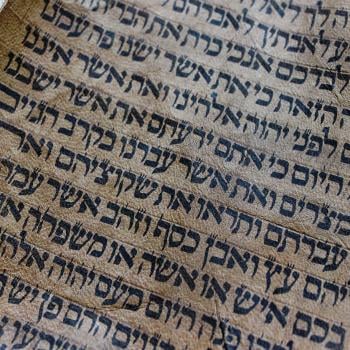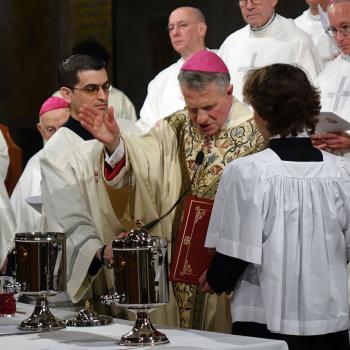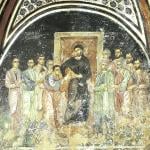As stated in part one of this series, one of the names for the Old Testament law is the Pentateuch. The term itself is Greek and means “the five-volume book”[1]. These books are the first five in scripture and consist of Genesis, Exodus, Leviticus, Numbers, and Deuteronomy. Our Jewish brethren call it the books of the law, or Torah. Some misapply what Torah applies to and attribute it solely to the ten commandments. This is certainly a valuable part of the corpus, but it is only a small part. The Torah applies to all the law codes found within these volumes[2].
Purpose of the Old Testament
The purpose of the law in the Old Testament goes far beyond control. In fact, one can argue that Old Testament law has nothing much to do with control at all. It is about covenant and how the sovereign God teaches the people to walk in his ways so they can have the best life possible[3]. To get a better understanding of these laws one must put their presuppositions to rest as best they can. The Old Testament law is full of things that are very difficult for the 21st century reader to understand. The biblical authors used language and literary forms that were common to the time in which they lived[4]. Part of this process is understanding how the Hebrew people lived in comparison to the other nations around them. This involves looking at other documents of the ancient near east which will shed some light on how the law functioned with the people of Israel. These laws give context to the similarities in other cultures of the ancient near east, but most importantly, how the law of Yahweh was different. The source of the law is God himself. Though other nations may claim this as well, their deities emerged out of chaos and have vastly different outlook on humanity than Yahweh[5].
Perhaps one of the best known ancient near east law codes comes from Babylon and is known as the Code of Hammurabi. This code is detailed and covers everything from legal code, moral values, and even politics[6]. There are many parallels between what we find in the Code of Hammurabi and the Pentateuch. One such parallel is in the Homicide laws. In section 207 of the Code of Hammurabi we read, “If he dies from his being struck, he shall also swear. If (the victim) is an awīlum, he shall weigh out one-half mina (= thirty shekels) of silver[7].” The parallel comes in Exodus 21:12-14 which states,
“Whoever strikes a man so that he dies shall be put to death. But if he did not lie in wait for him, but God let him fall into his hand, then I will appoint for you a place to which he may flee. But if a man willfully attacks another to kill him by cunning, you shall take him from my altar, that he may die (ESV).”
There are some who claim that the law is something that was synergized and reinvented by the Hebrews[8]. If one were to read through Hammurabi and the parallels in Exodus, Numbers, Leviticus, and Deuteronomy there are obvious similarities. The fact that there are similarities is something that should be recognized and applauded. There was a moral code in a prominent city state in the ancient near east that upheld a system of morality. This shows that, even though a people did not know him, Yahweh placed on the heart of man the difference between right and wrong[9]. Just as there are similarities between the two there is also some difference. In the prologue of Hammurabi, we read of the delegation of Marduk as divine patron of Babylon by Anu and Enlil[10]. It was commonplace in ancient near east law codes to have a divine patron that will establish law and order. Who establishes this law and order with the people of Israel? It is Yahweh, but is there a delegation such as is seen in the Law of Hammurabi? The law was given by Yahweh himself, without delegation to the people of Israel. When it comes to law codes and morality this is of huge significance.

Morality Codes and the Old Testament
There are many other sets of law and morality codes that have been recovered from the ancient near east. One of those is the Middle Assyrian Laws that were developed by Tiglath Pileser I[11]. These laws were summaries of earlier laws and there are parallels in the law codes that we find in the Pentateuch. There are set consequences for specific offenses, and it is certainly possible that some portions of both codes came about because of the need for specific norms[12]. One such parallel has to do with adultery. Article thirteen of the Middle Assyrian Laws call for the execution of both the male and female elites who commit the act[13]. The parallel is seen with Deuteronomy 22:22 which states, “If a man is found lying with the wife of another man, both of them shall die, the man who lay with the woman, and the woman. So you shall purge the evil from Israel (ESV).”
The function of the law in ancient Israel was fairly similar to how it functioned in other societies of the ancient near east. The difference being that the law was given to the Israelites directly from the source as opposed to an intermediary. Yahweh establishes a covenant with the people, with the first part being in the form of the decalogue. The order of the commandments is vital in understanding the covenant and how that trickles down to the treatment of people. The first four commandments deal with how the people are to interact with Yahweh. The following six commandments are how they are to interact with one another.
With these commandments Yahweh entered into a covenant with the people of Israel[14]. In other ancient near east nations, deities created humans to be servants of the gods. There were rituals that had to be performed to keep the gods happy. To be clear, Yahweh did require that the law be obeyed and had clear consequences for not doing so. However, Old Testament theology teaches that man was created out of an act of love by Yahweh. Yahweh wanted the people to be in relationship with him and saw it more than an agreement of mutual service[15]. In this covenant he shaped the people to make an impact on the nations around them.
Old Testament and Covenant
To be in covenant with God meant that the people had to live their lives in a specific way. What is different between Israel and the ancient near east counterparts is that Israel was to keep the law because it reflected the nature of Yahweh himself[16]. Yahweh saved the Israelites from the bondage of Egypt; in return he expresses his will for them in the covenant that was established[17].
With this covenant in mind, it is important to note that the law is not simply about doing, it is about being. Yahweh saved the people from the bondage of Egypt. Thus, fulfilling the requirements of the covenant was not a means of saved, but a response to it[18]. However, the people did not have a change of heart, and therefore were not going about the covenant with the right frame of reference. It became something that must be done instead of something that was done out of love and reverence. As a result, and the Pentateuch makes thing overly clear, the people failed repeatedly. Though they could not fulfill the covenant, Yahweh did not abandon them. There would be a new covenant that would come along that would be different than the first[19].
It is fascinating to read about the failures of the people in holding up their end of the covenant. It is heartbreaking to see that man makes the same mistakes again and again. This failure, according to Deuteronomy 30:1, would be a curse. Perhaps the curse is the thought of having to fulfill the law to be saved, but the irony is that the law was not what Yahweh had in mind when it comes to salvation[20]. For that we go back to the beginning, to the book of Genesis. In 3:15 of Genesis we are told that salvation will come from the seed of a woman. This covenant will be available to, not only Israel, but to all nations of the Earth[21]. This plan also makes it clear that it will not be our works that save us, but the grace and mercy of God[22].
[1]. James E. Smith, The Pentateuch, 2nd ed., Old Testament Survey Series (Joplin, MO: College Press Pub., 1993), 13.
[2]. Ossandón Widow, Juan Carlos. The Origins of the Canon of the Hebrew Bible (Leiden, The Netherlands: Brill, 2018).
[3]. Gane, Old Testament Law For, 18.
[4]. John Sailhamer, The Meaning of the Pentateuch: Revelation, Composition and Interpretation (Downers Grove, Ill: IVP Academic, 2009), 68.
[5]. Gane, Old Testament Law For, 19.
[6]. Victor Harold Matthews and Don C. Benjamin, Old Testament Parallels: Laws and Stories from the Ancient Near East, 4th ed. (New York: Paulist Press, 2016), 111.
[7]. Ibid., 119.
[8]. David P. Wright, Inventing God’s Law: How the Covenant Code of the Bible Used and Revised the Laws of Hammurabi (New York: Oxford University Press, 2009), 155.
[9]. Gane, Roy, Old Testament Law For, 19.
[10]. Matthews and Benjamin, Old Testament Parallels, 111.
[11]. Ibid., 126.
[12]. Jonathan Vroom, Law, Authority, and Interpretation in the Ancient World: The Origin of Legal Obligation in Early Judaism, Order No (Toronto (Canada): University of Toronto, 2017), 57.
[13]. Matthews and Benjamin, Old Testament Parallels, 127.
[14]. Robert G. Bratcher and Howard A. Hatton, A Handbook on Deuteronomy, UBS Handbook Series (New York: United Bible Societies, 2000), 2.
[15]. John H. Walton, Old Testament Theology for Christians: From Ancient Context to Enduring Belief (Westmont: InterVarsity Press, 2017), 63.
[16]. Walton Et Al, The IVP Background Commentary-Old Testament, Chavalas, Mark W., Matthews, Victor, and Chavalas, Dr Mark W. The IVP Bible Background Commentary – Old Testament: Old Testament (Downers Grove: InterVarsity Press, 2000), 27.
[17]. John H. Sailhamer, The Pentateuch As Narrative: A Biblical-Theological Commentary (Grand Rapids: HarperCollins Christian Publishing, 1995), 283.
[18]. Daniel Block, The Gospel According to Moses (Eugene: Cascade Books, 2019), 3.
[19]. Sailhamer, The Meaning Of, 66.
[20]. Kevin S. Chen, The Messianic Vision of the Pentateuch (Westmont: InterVarsity Press, 2019), 286.
[21]. Sailhamer, The Meaning Of, 67.
[22]. Chen, The Messianic Vision, 286.
















